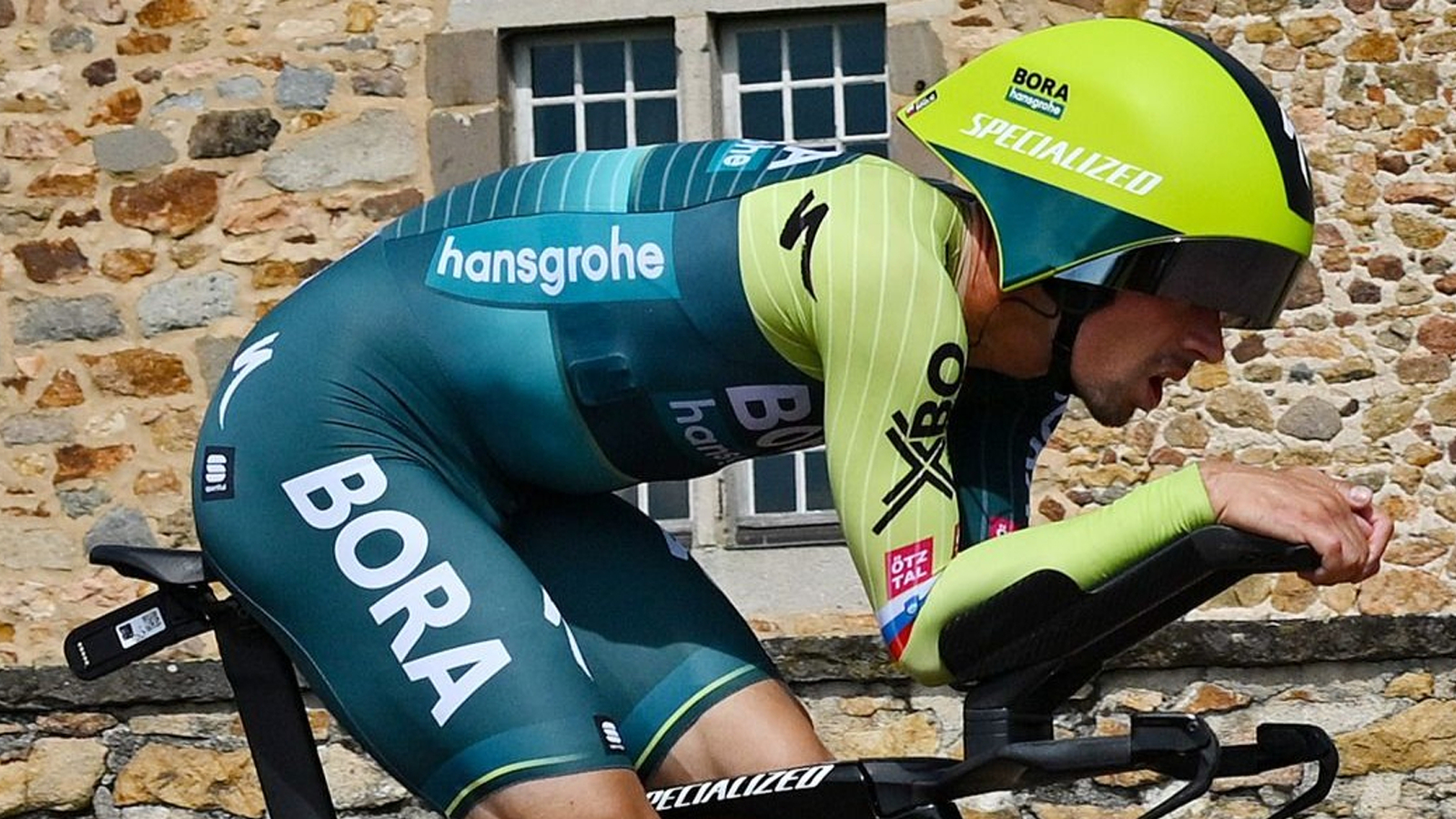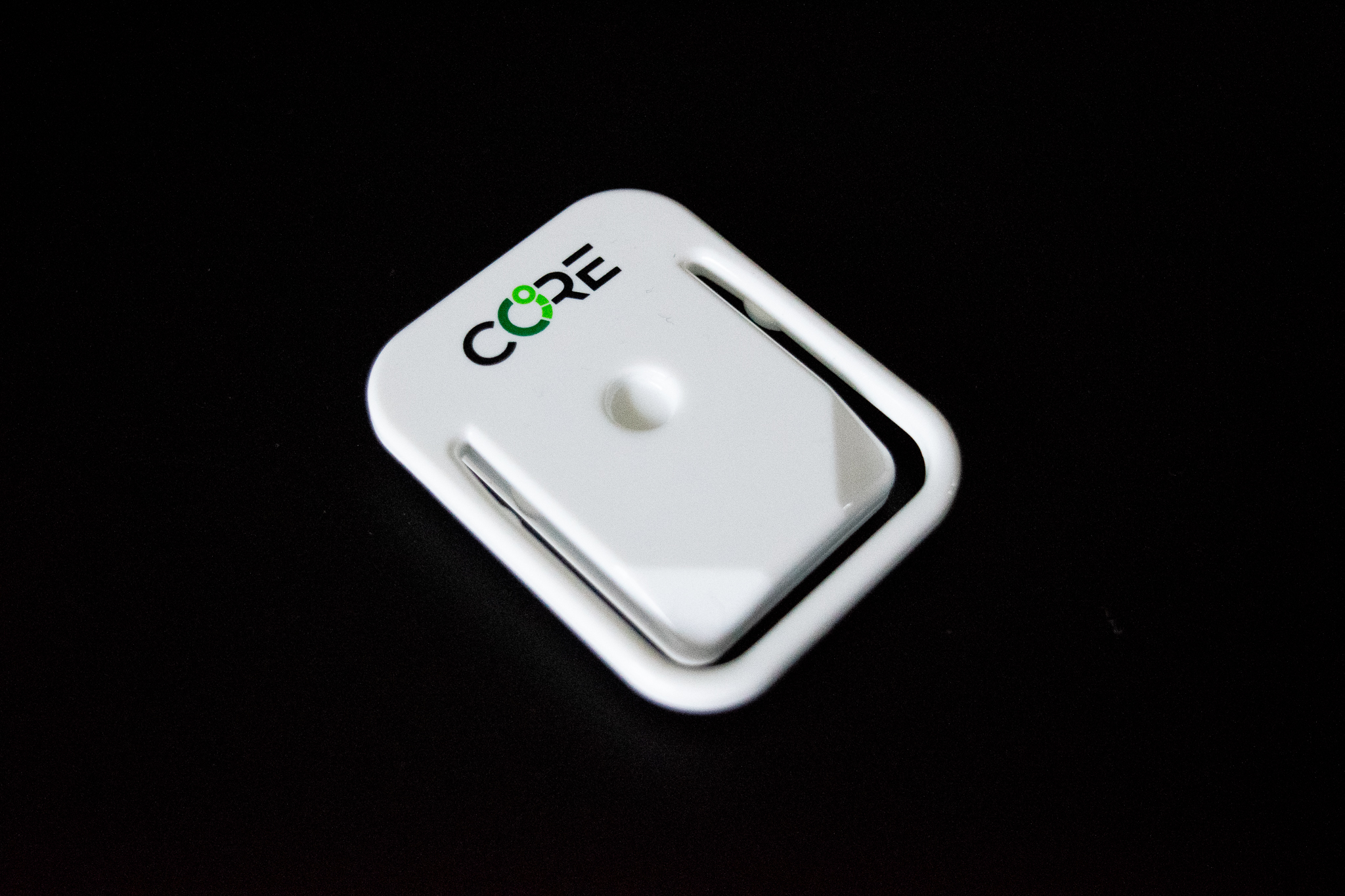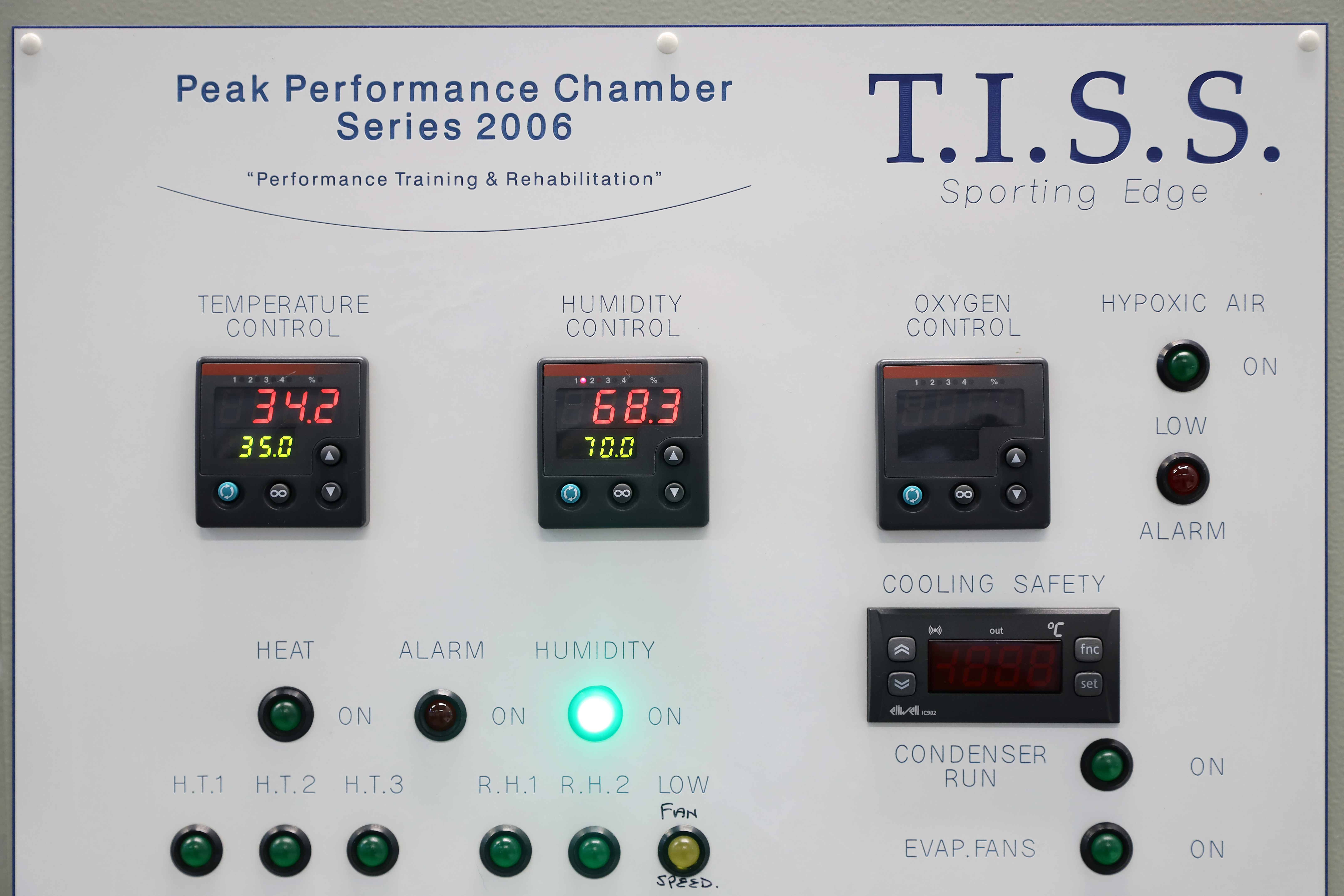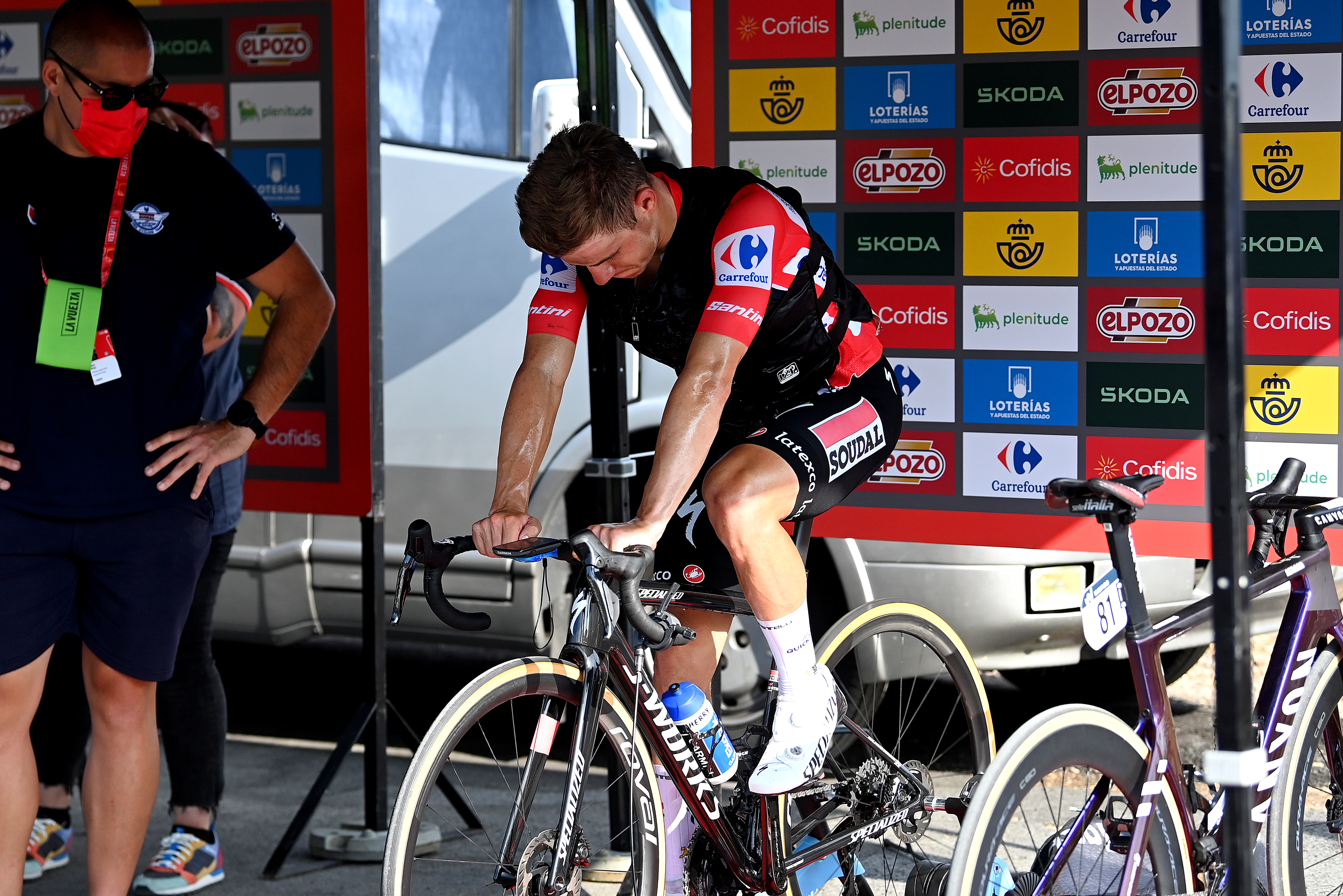'The team that keeps their top rider coolest is going to win' - Talking temperature with Core and Bora-Hansgrohe
With most UCI WorldTour teams using the Core temperature sensor, we sat down with the brand and sponsored team Bora-Hansgrohe ahead of the Tour de France, to learn about the role the tech plays in racing

"We think the team that keeps their top guy the coolest is gonna win."
That was the opinion shared by a non-sponsored athlete upon running into members of the Core Sensor team while travelling recently.
Although anecdotal, it's a soundbite that provides an intriguing insight into the valuable role that cooling and temperature management play in professional cycling. The riders that stay the coolest can keep producing the same amount of power and ultimately win because the body doesn't have to work overtime to try and cool itself down, which is where performance will begin to suffer.
Whilst the need for athletes to manage and train to deal with heat is nothing new, the wearable Core Temperature Sensor which has been commercially available for several years is now used by a large portion of the WorldTour peloton, providing the ability to capture all kinds of heat-related metrics more easily than the more invasive and expensive options of yesteryear such as e-pills and even rectal probes.
Cyclingnews spoke with Ross McGraw and Aline Barre from Core, as well as Dan Lorang, Head of Performance at Bora-Hansgrohe, to gain some insight into the Core Sensor tech, find out what it can bring to the table for athletes, the influence of global warming, as well as the way pro teams are using the sensor to inform their training and cooling strategies for racing.

The origins of Core
The origins of the Core sensor for athletes are directly linked with Dan Lorang's involvement. McGraw explained how a sporting incident with an athlete prompted its creation.
"GreenTeg (Core's parent company) is a bunch of engineers that came up with this miniaturised heat flux sensor, and there are many applications for that. One is photonics with laser calibration. Others are research-based and with building efficiency and things like that. But of course, when you look at thermodynamics, Wulf Glatz, who is the CEO of that company, saw athlete Sarah True collapse in the final of the Frankfurt Ironman, and that was sort of an aha moment of, 'wait a minute, we could probably apply this to humans in sport', and that's where core kind of came out of."
The latest race content, interviews, features, reviews and expert buying guides, direct to your inbox!
Lorang was Sarah True's coach so was approached by Core, and after seeing what the unit brought to the table, he introduced it to the Bora-Hansgrohe riders.
"I remembered Frankfurt when Sarah True collapsed in the heat and she was coached by myself, and [Wulf] contacted me and said, 'Hey, we are developing a sensor.' And that's where we started, also a collaboration with Core. I think we tested some of the first sensors in the team."
McGraw was also able to expand on just what is going on within the Core sensor unit to provide the metrics it does and the need for a non-invasive solution.
“Core uses three factors to calculate core body temperature. We use skin temp, which is not proprietary or new, and many people do that, we use a bit of heart rate because it allows us to eliminate some noise. The chief amount of data comes from our heat flux sensor, which we manufacture in our headquarters in Zurich."
An algorithm processes the data the sensor captures and it transmits it to paired smart devices like the best bike computers.
"The heat flux sensor is essentially measuring energy transfer, how much energy is leaving your body. And that has many applications, but if we look at it in terms of core temperature and those other data points, we can get a pretty accurate measurement of core body temperature.”

Pro team use
Most WorldTour teams are using the Core sensor now. Teams are likely using the tool to varying extents but all will be able to capture a lot of temperature-related data on their riders to inform training and performance. Lorang explained the importance of keeping cool in today's peloton.
“It's really a big deal because the performance level is so high and there are so many athletes who are able to bring amazing performances that it's just about this last 0.1%. We all know about global warming, it gets hotter and hotter and warmer and warmer. We know that the big teams are doing nearly everything right on nutrition. They are doing everything right in training, and they have good material. So somewhere you have to make a difference, and body temperature can be a limiting factor."
Lorang even provided an example which highlighted just how much pro riders stand to lose if their core temperature rises too much during a race, detracting from physical performance.
"Let me take one example, your threshold is say 400 watts. In hot conditions, it could be that the threshold drops to 370 for example, with heat adaptation training, you probably can bring the threshold back up to 390 or 95 somewhere there, so you can close that gap. And I think that is a big benefit.”
The ability to maintain threshold power will be a must for WorldTour riders, or most racers even. A drop of 30 watts based on Lorang's example is huge in the WorldTour. Steps to mitigate this include heat acclimation training, which is one of the areas where the Core sensor can help, though McGraw explained different teams will use the sensor in different ways.
“What Core data has also helped with is cooling beyond what's intuitive. We had data from a descent from one rider, and we saw his core temp dropping after a really big climb, which is really what you want to see. But then all of a sudden it plateaued because his jersey had dried up, and you didn't get the second phase change of evaporation. And then he hit the next climb."
"As scientists, our team was thinking if he would have dumped more water on he would have gone even lower, and he would have had more room to go on the next climb, as far as the differential. But of course, that's probably not comfortable because your core temp is a lot slower to react than your skin temp, so although [descending soaking wet] might feel uncomfortable and be counterintuitive, it may actually help performance."
Riders dumping water over themselves is nothing new, but it's possibly far more calculated these days. Especially when the sensor allows teams to track a rider's change in skin and core temperature whilst descending for instance. Keeping kit wet is also a point touched on by Lorang in the battle to keep cool.

Kit choice and riding with wet kit
Lorang agreed that Tadej Pogačar's notably bare arms among a sea of arm warmers and long sleeves at certain times during the Giro d'Italia recently may not have simply been a coincidence and explained that keeping arm warmers wet can provide a simple cooling benefit, although understandably, he wouldn't expand on the team's star rider Primož Roglič's cooling strategy for the upcoming Tour de France.
"That's one thing you can do, keep the kit wet. The body has to get rid of heat, if everything is dry it's not working as properly. Cool down your arms and this will cool down the blood in your arms and hands. This will help cool down the body in a moderate way."
McGraw also mentioned that in the world of aero-optimised cycling kit, making things more thermally efficient as well as aero is also a consideration.
“Previously, there was a lot of interest in just cooling strategies, heat training strategies, and that's become quite commonplace. I mean, you've certainly seen the cooling vests on virtually every team now. But what we've seen a lot more of is just an analysis of the kit. In a world where everyone's super aero already, one of the most impactful changes you can make to your kit is to make it better from a thermal perspective."
McGraw mentioned aero versus thermal analysis regarding the best aero helmets for time trials. The analysis of the aero benefit over a potential loss in power from overheating in a less well-ventilated helmet is a fascinating one. Take Stage 20 of the 2023 Giro for instance, where Geraint Thomas wore a regular road helmet and eventual winner Primož Roglič an aero model.
"How much heat can you dissipate? And of course, we've worked with a lot of these guys in the past, and I imagine there were quite a few calculations in individual teams of, do we want the heat benefit, or do we want the aero benefit, and how long is each section?"

Warming up and cooling down
The concept of a warm-up is deeply ingrained in many sports. But there is a balance to be struck and the time-honored warm-up leaving riders hot - sometimes even drenched in sweat - could be counterintuitive. Lorang explained his own son had recently questioned this concept himself. This is why we see riders warming up in ice vests before time trials and road stages as Lorang explained.
"When you look, for example, at warm-ups for a time trial, we want to bring on the blood circulation to make the metabolism work, to make the enzyme work quite well in your body to accelerate lactate combustion.
"This heats up your body. But this is basically not what you want. You want to keep your body temperature down. If you produce more power, you also produce more heat, and that's what the body tries to avoid."
Lorang explained starting a race or effort cooler means there is a bigger temperature gap to work through before a critical temperature is reached. When this happens the body tries to shut down performance as a safety mechanism. For example, a rider starting a fast and furious mountain stage cooler than a competitor will be at a clear advantage.

Cooling strategies
It sounds as though the playbook is still being written to a degree when it comes to cooling strategies. Various approaches and strategies are being tried, and it's clear that it's up to teams, coaches and riders to work out what is most effective for them.
Barre expanded on how there is no clear-cut best practice yet regarding cooling, which is why we see a range of tactics, from ice vests and gels to riders consuming ice slushies and drinks (particularly in the velodrome, where heat equals fast conditions).
"At the moment, we are looking at what is actually the best cooling strategy. It's still not clear in the literature or science in general. But it's important to have a lower skin temperature because then the heat strain on the body will be lower, in general."
Lorang also made a point regarding the work and logistics required to keep riders cool on the road; surely a more difficult undertaking compared to the pits of the indoor velodrome.
"The team who can have most people on the road has the biggest advantage to cool down the athletes more often. So you need big budgets and you need a lot of people to make that happen. So a question that comes up is, should it be restricted? The same with extra feeding and so on, but that's a different topic. But what I want to say is, you can make the best cooling strategy in the world, but it has to be adapted also to cycling and to your specific needs.”
If teams are discussing whether a restriction on the amount of cooling help that can be provided is needed, it's probably safe to assume a lot of thought and planning is going into it already.
"What is not so easy in cycling, is that you are not in a stadium where you can always provide some ice bottles or whatever, you are on the road. So everything you provide to the riders has to be from the car or roadside."
McGraw also painted a picture of the number of bottles allocated to try and keep riders cool, especially in generally hot races like the Tour de France.
"We haven't been able to get the data, and we desperately want it, but we've just noticed twice as many bottles. The teams have ice chests full of bottles, and they're not for drinking. They're not drinking more necessarily. They're cooling their bodies more because they're realizing the importance of keeping them cool."

"You see the ice socks, you see cold water, you see ice gels, special cooling fans, cooling vests. During the stage is the most difficult time. You will see some drinks with some menthol in them, just to give you the impression of being cooler for your brain. These are the classic ones."
"The question is always, what is the most efficient one? And there you have different opinions, how much cooling down should you do? Because at some point there comes a counter-reaction from the body because the body thinks it's cold and counter-reacts to it. So there's also something to consider, and what is right for the individual."
Lorang explained that the right strategy will vary for each individual. As such he explained the Core data and temperature make up one piece of the overall puzzle and that riders aren't necessarily riding specifically to Core temperature, a question that was a key motivator for this piece.
"I don't know if it's the right tool to really calibrate your efforts. I think it's always an additional tool to see if you are on the safe side or not, and when you see, 'oh, heart rate is now over threshold and core temperature also'. So you probably keep the pace, or you decrease the intensity. I always like to have different metrics to bring together the whole picture."

There is no denying our world is heating up, it's a point that all interviewees for this feature have touched on. Our internal core temperatures are linked to human life and avoiding being too hot or too cold has likely been a concern for us since time immemorial.
In cycling terms, riders were pouring water over their heads in races fifty years ago or more to try and stay comfortable and cool on the bike. Riders may not have understood completely why they needed to do it, but they did it; a common theme in cycling sometimes.
Cycling has changed a lot, particularly from a training and performance standpoint over the last 15 to 20 years, some would say beyond recognition at the top end. Professional performance is an arms race and tools like the Core sensor and the data it can provide seem to be helping elevate the art of cycle racing to new heights.

Tom joined the Cyclingnews team in late 2022 as a tech writer. Despite having a degree in English Literature he has spent his entire working life in the cycling industry in one form or another. He has over 10 years of experience as a qualified mechanic, with the last five years before joining Cyclingnews being spent running an independent workshop. This means he is just as happy tinkering away in the garage as he is out on the road bike, and he isn’t afraid to pull a bike apart or get hands-on with it when testing to really see what it’s made of.
He has ridden and raced bikes from an early age up to a national level on the road and track, and has ridden and competed in most disciplines. He has a keen eye for pro-team tech and enjoys spotting new or interesting components in the wild. During his time at Cyclingnews, Tom has already interviewed some of the sport's biggest names including Mathieu van der Poel, Tadej Pogačar and Alberto Contador. He's also covered various launches from brands such as Pinarello, Ridley, Specialized and more, tackled the Roubaix Challenge sportive aboard his own rim-brake Cannondale SuperSix Evo, tested over 20 aero helmets in the wind tunnel, and has created helpful in-depth buying advice relating to countless categories from torque wrenches to winter clothing.
